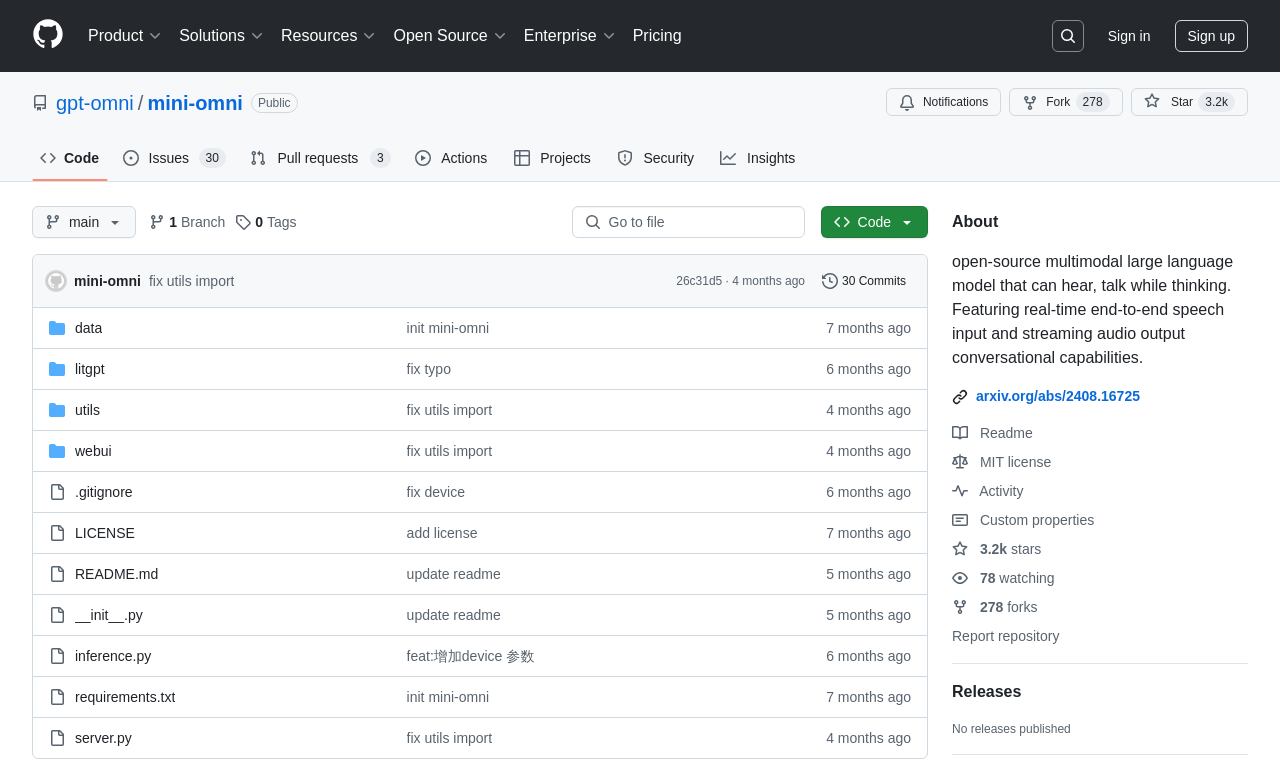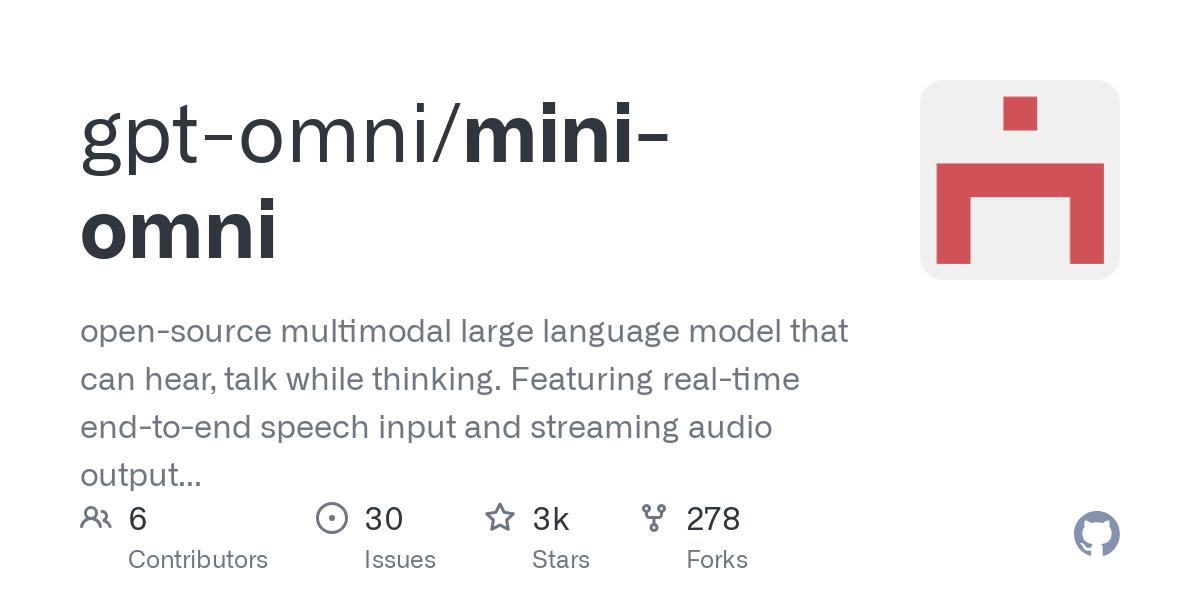Mini-Omni
by gpt-omniMini-Omni is an open-source end-to-end voice dialogue model capable of real-time voice input and output, enabling "think while speaking" functionality in conversations.
What is Mini-Omni?
Mini-Omni is an open-source, end-to-end voice dialogue model designed for real-time voice input and output, enabling "think while speaking" functionality in conversations. It eliminates the need for additional ASR or TTS systems by directly processing voice-to-voice dialogue. The model leverages text-guided voice generation and batch parallel strategies to enhance performance and maintain natural language capabilities.
Main Features of Mini-Omni
- Real-Time Voice Interaction: Enables seamless, end-to-end voice dialogue without relying on external ASR or TTS systems.
- Parallel Text and Voice Generation: Simultaneously generates text and voice output during inference, guided by text information for natural and fluent interactions.
- Batch Parallel Inference: Improves inference capability during streaming audio output, ensuring diverse and accurate voice responses.
- Audio Language Modeling: Converts continuous speech signals into discrete audio tokens, enabling large language models to perform audio modality inference.
- Cross-Modal Understanding: Processes multiple input modalities, including text and audio, for effective cross-modal interactions.
Technical Principles of Mini-Omni
- End-to-End Architecture: Directly processes audio input to text and audio output without separate ASR and TTS systems.
- Text-Guided Voice Generation: Generates text first, then synthesizes voice based on the text, leveraging the language model's text processing capabilities.
- Parallel Generation Strategy: Simultaneously generates text and audio tokens during inference, maintaining coherent and consistent dialogues.
- Batch Parallel Inference: Processes multiple inputs simultaneously, improving audio generation quality through text generation.
- Audio Encoding and Decoding: Uses an audio encoder (e.g., Whisper) to convert speech signals into discrete audio tokens and an audio decoder (e.g., SNAC) to convert them back into audio.
Project Addresses
- Github Repository: https://github.com/gpt-omni/mini-omni
- HuggingFace Model Library: https://huggingface.co/gpt-omni/mini-omni
- arXiv Technical Paper: https://arxiv.org/pdf/2408.16725
Application Scenarios
- Smart Assistants and Virtual Assistants: Helps users perform tasks like setting reminders, querying information, and controlling devices through voice interaction.
- Customer Service: Provides 24/7 automated support, handling inquiries, solving problems, and executing transactions.
- Smart Home Control: Controls home devices such as lights, temperature, and security systems via voice commands.
- Education and Training: Offers voice-interactive learning experiences for subjects like languages and history.
- In-Car Systems: Integrates into in-car infotainment systems for voice-controlled navigation, music playback, and communication.
Model Capabilities
Model Type
multimodal
Supported Tasks
Real-Time Voice Interaction
Text And Voice Generation
Cross-Modal Understanding
Audio Language Modeling
Batch Parallel Inference
Tags
Voice Dialogue
Real-Time Interaction
Open-Source
Multimodal AI
Voice Technology
AI Models
Conversational AI
Text-Guided Generation
Speech Synthesis
Cross-Modal Understanding
Usage & Integration
Pricing
free
License
Open Source
Screenshots & Images
Primary Screenshot

Additional Images

Stats
61
Views
0
Favorites

